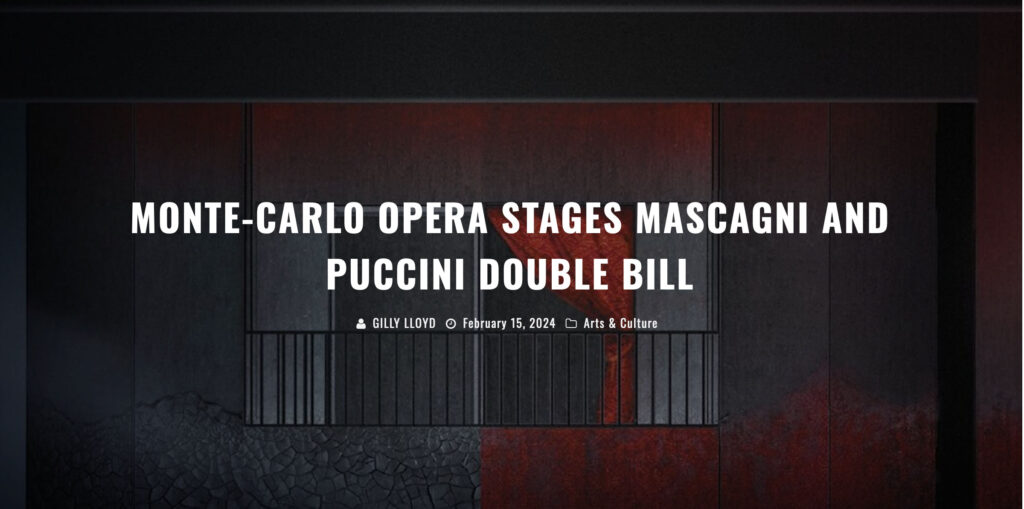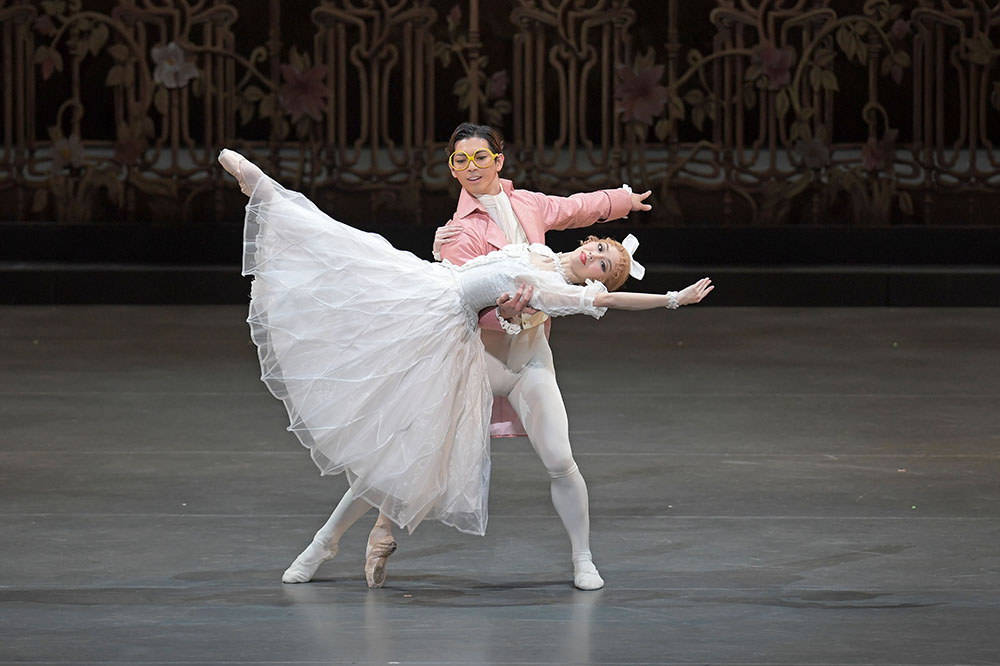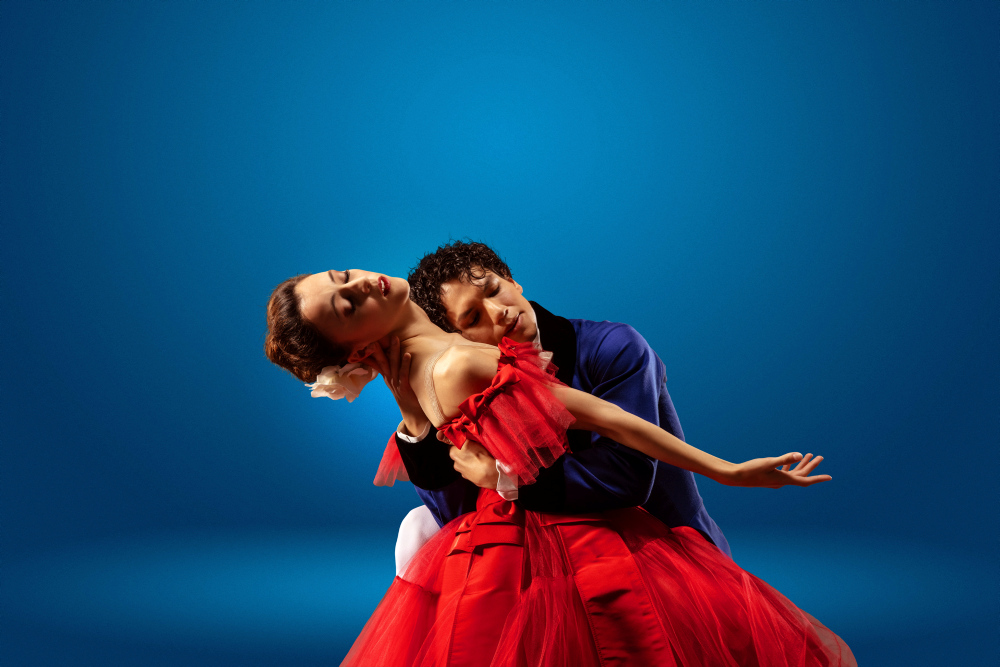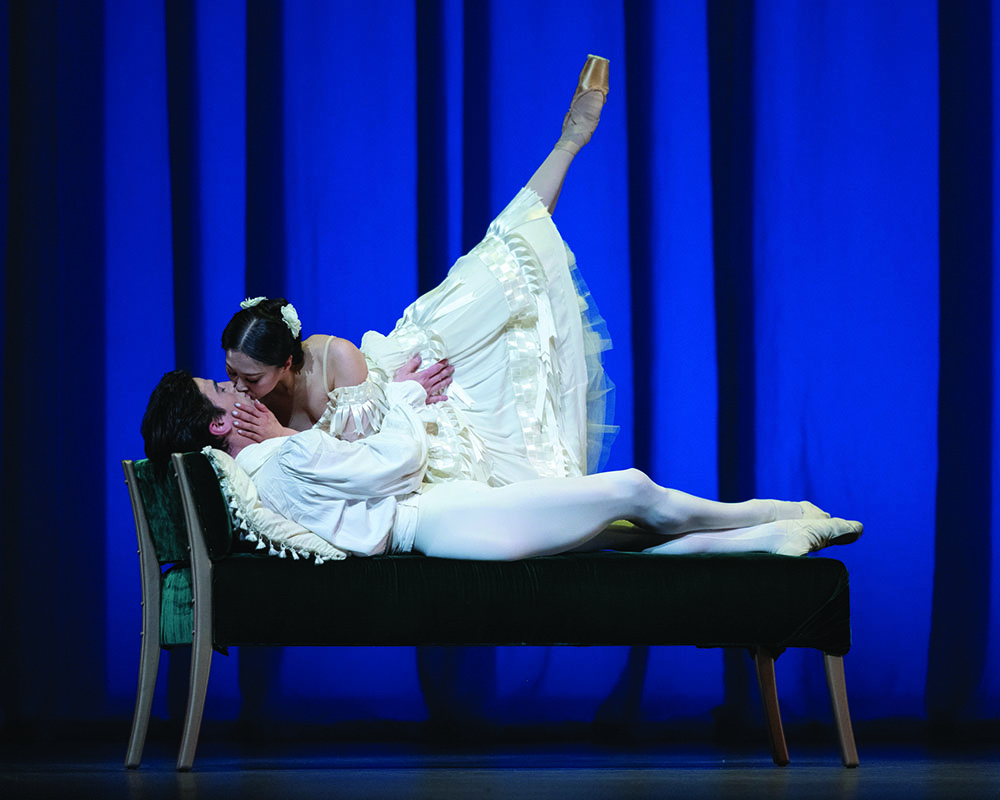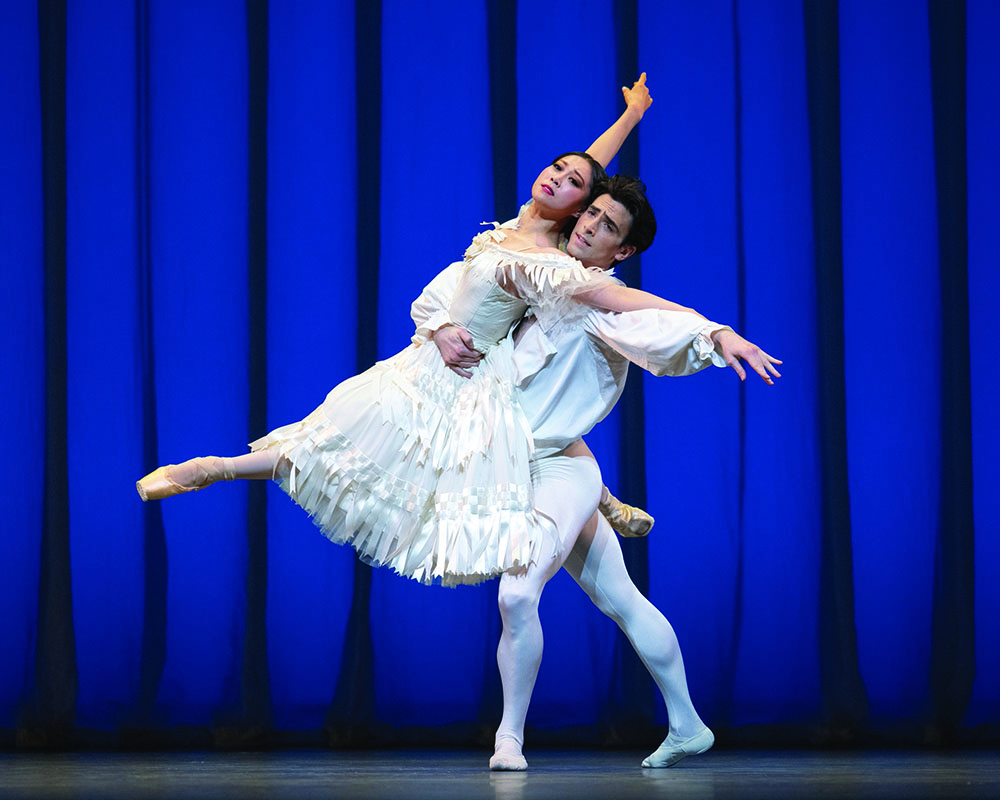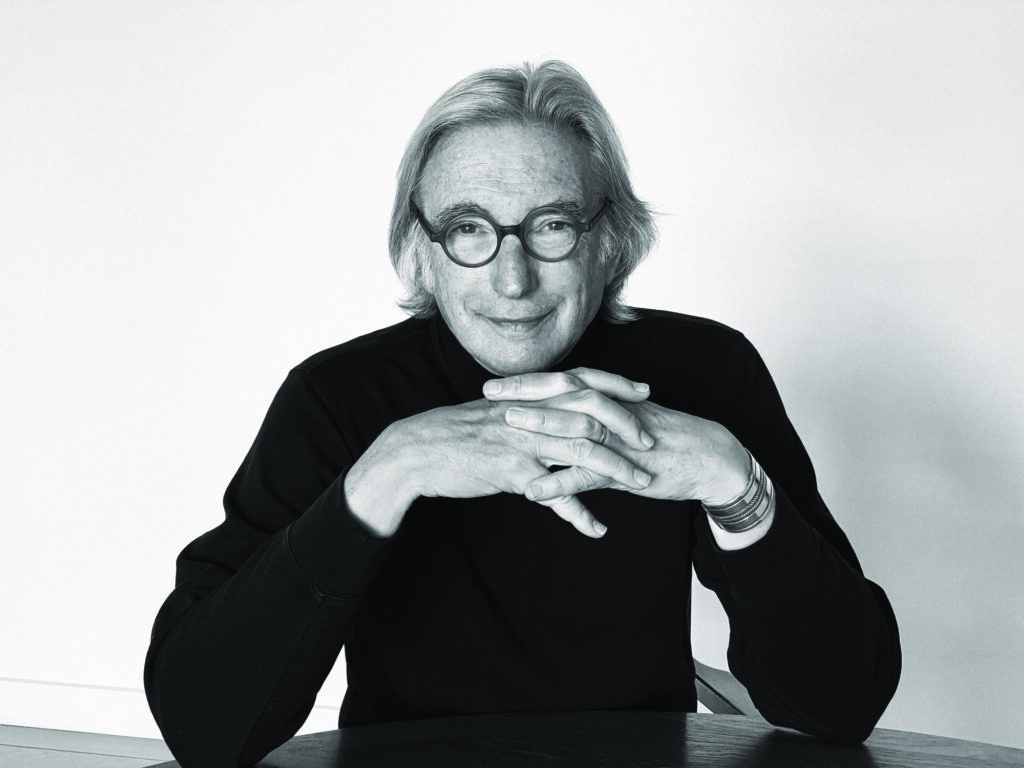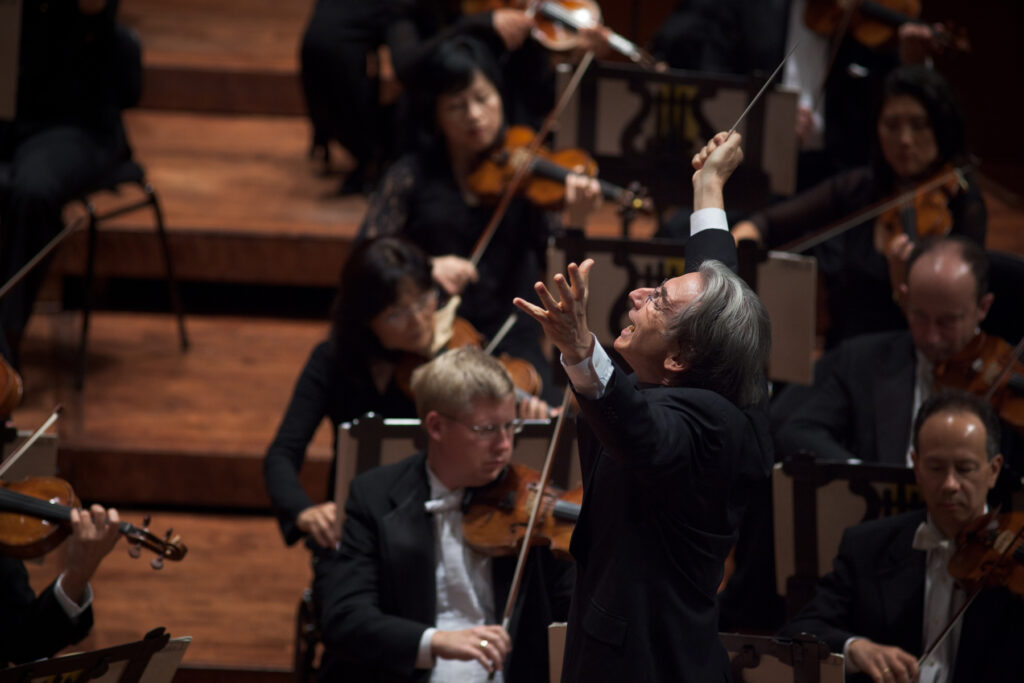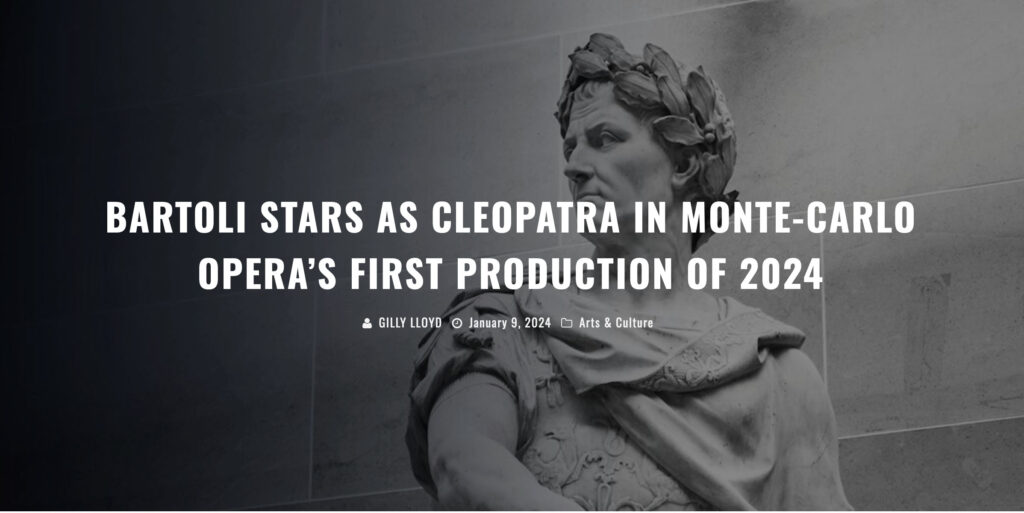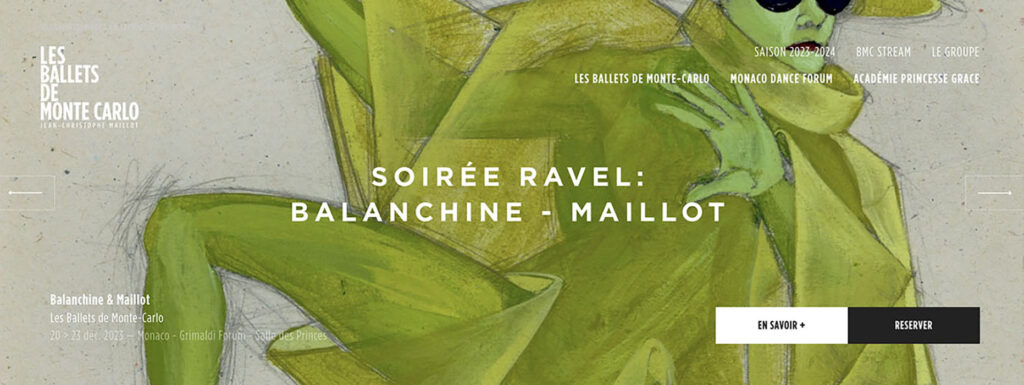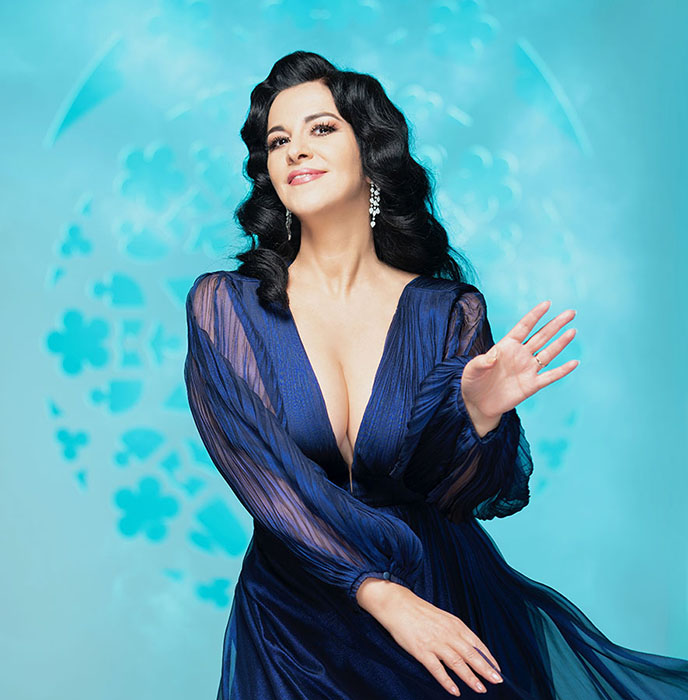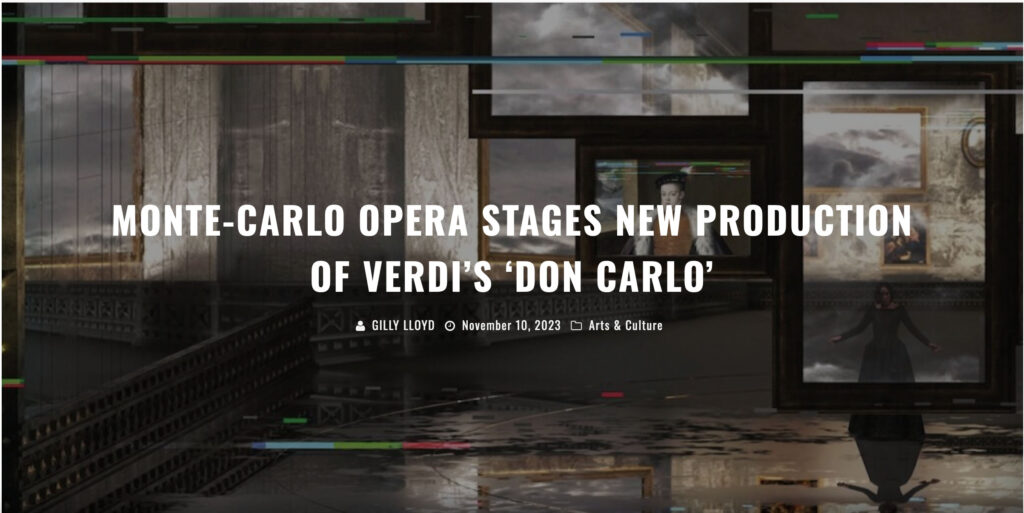Monte-Carlo Opera presents an interesting combination of Mascagni’s Cavalleria Rusticana and Puccini’s Gianni Schicchi on the same bill. Each opera represents a different side of Italy – the fire and passion of Sicily, and the elegance and spirituality of the city of Florence. This new production is staged by German director Grischa Asagaroff.
Italian composer Pietro Mascagni is probably best known for his role in introducing the concept of verismo to the world of opera in the latter part of the 19th century. Already popular in theatre, verismo reflected the lives and passions, violence and honour of everyday people – as opposed to the somewhat distant existences of royalty and the gods – and it accentuated the importance of emotion over beautiful sound.
In 1888 Mascagni was just about to submit his recently completed opera, Guglielmo Ratcliff, to a competition held by music publisher Edoardo Sonzogno, but he then learned that his wife had already submitted his 1880 one-act opera Cavalleria Rusticana. This opera was the overwhelming winner of the competition.
Cavalleria Rusticana was based on a Sicilian melodrama by Giovanni Verga. Set to a libretto by Giovanni Targioni-Tozzetti and Guido Menasci, against the backdrop of the religious celebration of Easter, it tells a story of love, betrayal, and revenge. The soldier Turiddu, from a humble working-class community of Sicily, returns from military service, to find that his fiancée Lola has married Alfio, a well-to-do wagon owner and driver. In an act of revenge, Turiddu seduces Santuzza, a peasant girl, and Lola becomes so jealous that she starts an adulterous affair with Turiddu. Santuzza publicly betrays the pair, Alfio challenges Turiddu to a duel, and Turiddu pays for his actions with his life.
Although Cavalleria Rusticana opened to a half-empty house at the Teatro Costanzi, Rome, on May 17th, 1890, it was rapturously received, and has retained its popularity ever since, often being performed in tandem with Leoncavallo’s Pagliacci. It’s probably best known for the beautiful intermezzo between the opera’s two scenes.
Uruguayan soprano Maria José Siri, interpreter of the most famous Verdian and Puccini heroines, with a repertoire ranging from bel canto to verismo, sings the role of Santuzza. Lola is sung by Italian mezzo-soprano, Annunziata Vestri, known for her most recent TV appearances in Rossini’s Le barbier de Séville, Puccini’s Madama Butterfly and Rossini’s La Cenerentola. The role of Turiddu is sung by Azerbaijani tenor Yusif Eyvazov, known for what the LA Times describes as his “metallic, stentorian and markedly Italianate” voice. Hungarian bass Peter Kalman, highly regarded for his character portrayals in the Italian buffo tradition, is Alfio.
Giacomo Puccini wrote the one-act opera Gianni Schicchi during 1917 and 1918 as the third part of his his triptych Il trittico, the other operas being Il tabarro (The Cloak) and Suor Angelica (Sister Angelica). With a libretto by Giovacchino Forzano, it is set in 1299 in the mediaeval city of Florence, and is based on an episode from Dante’s Divine Comedy, in which Gianni Schicchi (an actual Florentine) is consigned to the eighth circle of hell with other forgers and cheats, for his duplicity.
The opera tells of Gianni Schicchi who was brought in, after the death of Buoso Donati (also an actual Florentine), by the greedy relatives of the deceased man to make a counterfeit will, because they had been disinherited. Schicchi, however, managed to bequeath most of Donati ’s fortune to himself, while the relatives are forced to sit by silently. At the end of the opera, as Scicchi arranges for the young lovers, Lauretta (Schicchi’s daughter) and Rinuccio (Zita’s nephew), to receive their share of the inheritance, he turns to the audience and tells them that he concocted his scheme so that even if Dante has condemned him to hell, he hopes the audience will forgive him in light of “extenuating circumstances”.
According to Encyclopaedia Britannica, part of the Donatis’ great house, so coveted in the opera, still stands in Florence today, a crumbling tower on the Via del Corso, very near the house where Dante was born in 1265.
Gianni Schicchi, Puccini’s only comic opera, is possibly best known for the soprano aria O mio babbino caro (Oh My Dear Father) sung by Lauretta to Schicchi. The opera was premiered by the Metropolitan Opera in New York on14th December, 1918.
The role of Gianni Schicci will be taken by Italian baritone Nicola Alaimo, soon to be seen in the title role in Opera Rara’s 1857 version of Verdi’s Simon Boccanegra. Lauretta is sung by Armenian soprano Nina Minasyan and Rinuccio by Uruguayan tenor Edgardo Rocha, admired for his bel canto repertoire and considered one of its most important exponents. Zita, Buoso Donati’s cousin, is sung by Italian mezzo-soprano Elena Zilio.
Also in the cast are Enrico Casari, Giovanni Romeo, Giovanni Furlanetto, Eugenio di Lieto, Rosa Bove, Mattio Peirone, Fabrice Alibert, Caterina Di Tonno, Egon Rostagni, Przemyslaw Baranek and Luca Vianello.
Speranza Scappuzzi, who in 2022 became the first Italian woman to conduct at Teatro alla Scala in Milan, leads the Monte-Carlo Philharmonic Orchestra, the Choir of the Monte-Carlo Opera and the Rainier III Academy of Music in the double bill of Cavalleria Rusticana and Gianni Schicchi in four performances, between February 23 and 29 at the Monte-Carlo Opera. Further information, and details of ticketing can be found on the Monte-Carlo Opera website.
Information sourced from:
Cavalleria Rusticana:
Monte-Carlo Opera programme notes
Encyclopaedia Britannica and Encylopaedia Britannica
Opera Australia programme notes
Gianni Schicchi:
Monte-Carlo Opera programme notes
Encyclopaedia Britannica
A version of this article first appeared in Riviera Buzz

